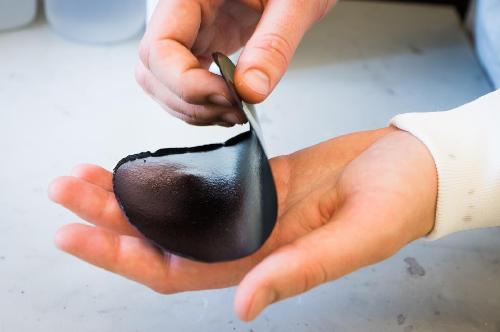Researchers have developed power paper; a new material with an outstanding ability to store energy. The material consists of nanocellulose and a conductive polymer and one sheet, 15 centimeters in diameter and a few tenths of a millimeter thick can store as much as 1 F, which is similar to the supercapacitors currently on the market. The material can be recharged hundreds of times and each charge only takes a few seconds.
The new power paper is just like regular pulp, which has to be dehydrated when making paper. The challenge is to develop an industrial-scale process for this.
It could be a valuable product in a world where the increased use of renewable energy requires new methods for energy storage -- from summer to winter, from a windy day to a calm one, from a sunny day to one with heavy cloud cover.

"Thin films that function as capacitors have existed for some time. What we have done is to produce the material in three dimensions. We can produce thick sheets," says Xavier Crispin, professor of organic electronics at Linköping University, Sweden, and co-author to the article.
The material, power paper, looks and feels like a slightly plastic-y paper and the researchers have amused themselves by using one piece to make an origami swan, which gives an indication of its strength.
The structural foundation of the material is nanocellulose, which is cellulose fibres which, using high-pressure water, are broken down into fibers as thin as 20 nm in diameter. With the cellulose fibers in a solution of water, an electrically charged polymer (PEDOT:PSS), also in a water solution, is added. The polymer then forms a thin coating around the fibers.
The new cellulose-polymer material has set a new world record in simultaneous conductivity for ions and electrons, which explains its exceptional capacity for energy storage. It also opens the door to continued development toward even higher capacity. Unlike the batteries and capacitors currently on the market, power paper is produced from simple materials - renewable cellulose and an easily available polymer. It is light in weight, it requires no dangerous chemicals or heavy metals and it is waterproof.




Comments